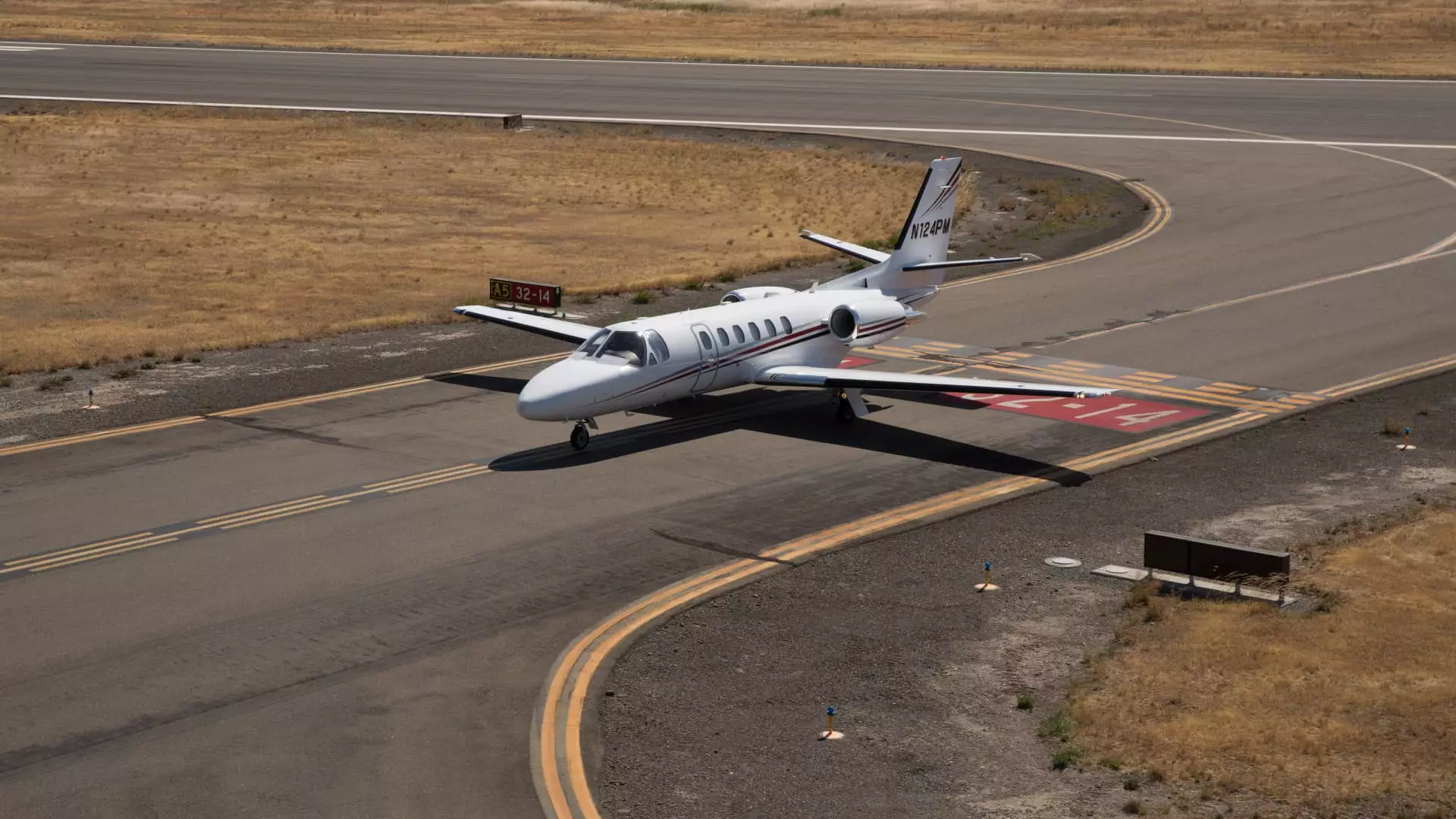The business jet industry once soared high, symbolizing opulence and the limitless potential of economic growth. However, recent data reveals a stark and troubling decline in demand for these luxurious modes of transportation. Barclays’ latest findings show an alarming 49% drop in customer interest since March, underscoring the fragility of the current economic climate. This sharp decrease, documented through responses from 65 industry insiders, marks the steepest decline recording since the onset of the COVID-19 pandemic. Such a significant downturn raises important questions: What does this mean for the future of air travel, and what systemic issues are at play?
The survey data, collected from April 9 to 15, indicates a failing consumer confidence that transcends mere economic metrics, affecting even those travelers typically less sensitive to market fluctuations. This changed sentiment is not just a blip; it suggests fundamental shifts in priorities, as consumers—including those with deep pockets—reevaluate their spending. Analysts are expressing unexpected surprise at the breadth of this drop, highlighting that it reveals a broader discontent within the market.
Measuring the Decline: The Numbers Tell a Bleak Story
According to the Barclays Business Jet Indicator, a composite score plummeting from 52 to 40 correlates closely with airplane manufacturers’ book-to-bill ratios, a crucial indicator of financial health in the industry. A score in the low 40s typically signals a stagnant market where the demand for new orders falls short of fulfilling existing ones. In this case, a 23% dip is particularly alarming—it illustrates a lack of confidence that reverberates through the economy as consumers pull back on their spending habits.
What’s more disconcerting is that nearly half of the respondents anticipate demand for new business jets to diminish, driven by apprehensions over inflationary tariffs. The escalating concern among buyers that tariffs might ultimately undermine their operational capacities reveals an unsettling reality—consumers are no longer just anxious about immediate expenditures but are focusing on long-term implications. In such a precarious environment, a lack of optimism starts to permeate all levels of business operations.
The Tariff Toll: A Political and Economic Crossroad
An overwhelming 93% of survey participants indicated that tariffs would negatively impact the demand for new aircraft, and most forecast significant repercussions. It is disheartening to realize that policy frameworks like tariffs could play such a pivotal role in shaping market behavior. Are these tariffs necessary to safeguard domestic industries, or are they merely a misguided weapon in a political game that sacrifices economic stability?
Moreover, only 7% believed there would be no impact, which starkly contrasts with earlier highs of pre-pandemic demand. While the administration pushes for tax reforms and retroactive deductions through legislation intended to revive the economy, one can’t help but wonder if these measures address the symptoms rather than the cause of a larger malaise. Would the reinstatement of past tax benefits truly stimulate the market, or would it merely shift the burdens without creating sustainable growth?
The Future of Business Jets: A Glimmer or a Gap?
Amidst these challenges, there is a flicker of hope. Expecting to counter the downturn, some legislators are advocating for tax provisions reminiscent of earlier policies that incentivized equipment purchases. However, the skepticism surrounding the efficacy of such measures raises doubts about whether businesses will indeed seize the opportunity to invest. In an economy marked by uncertainty, it remains difficult to trust that short-term tax incentives will successfully revive long-term market enthusiasm.
Meanwhile, the used jet market paints an equally grim picture; 67% of survey respondents estimate a negative trend in demand. Despite some fragile optimism—27% believe that demand could improve—there is an undeniable sense that both buyers and sellers are operating in a significantly altered reality, one that requires much more than just fiscal tweaks to invigorate.
The landscape for business jets serves as a microcosm of the broader economic terrain. The current turmoil reflects a society grappling with complex questions about consumer confidence, the efficacy of government intervention, and the ethics of economic prioritization. As individuals and corporations weigh their travel decisions alongside economic uncertainty, the business jet industry finds itself at a crucial juncture, one that may demand a reevaluation of values, priorities, and the very nature of modern mobility.

